In this second part of our journey through lesser known attractions in Athens, we move from Peisistratos’ ancient aqueduct near the National Garden, past King Otto’s 19th-century stone arch bridge and the worn relief of the god Pan – both tucked beside the wild and overgrown islet known as Vatrachonisi, right in the middle of one of the city’s busiest intersections. From there, the route takes us onward toward Athens’ Central Market – the Varvakios Agora – and the secrets that still linger there.
Hidden attractions in Athens
Athens is a city built in layers – marked by ancient civilizations, hard-won conquests, shifting beliefs, and the daily rhythms of life that still pulse through its streets today. Its buildings and alleys echo with the presence of many eras: Archaic and Classical Athens, the Hellenistic period, Roman occupation, a thousand years of Byzantine rule, Ottoman domination, Frankish control, the 19th-century War of Independence, and finally, the formation of the modern Greek state.
Sometimes, these layers are easy to spot – a marble column built into a later wall, a hidden courtyard tucked behind a noisy street. Other times, they lie buried, waiting to be uncovered by those who know where to look.
But Athens is not a museum. It is a living city, where past and present continuously intertwine. The same streets once walked by philosophers and revolutionaries now bustle with cafés, shops, and everyday Athenian life. Every step through Athens is a step across centuries.
🧭 The Expedition is expanding – but needs more wind in its sails 🌊
For two years, Greek Expedition has explored and shared a different Greece – through stories, guides, and insights created without ads, sponsors, or paywalls.
Everything you see has been created only through personal funding, powered by curiosity and a passion for exploration, discovery, and sharing. That’s how we’ve stayed true to our course: in-depth, personal, and uncompromising in quality.
If you feel our work brings value, help the wind fill our sails and carry the Expedition further – toward new shores.
🙏 Every contribution, large or small, truly helps:
- PayPal: paypal.me/georgesxyftilis
- IBAN: SE98 3000 0000 0058 0828 9473
- Swish (Swedish supporters): 0722 029 786 – Georges Xyftilis
Ancient aqueduct in the National Garden
Our first stop today, through lesser-known attractions in Athens, is the aqueduct of Pisistratus, built in the 6th century BCE, which still irrigates the central city park – the National Garden. We begin our walk at the park’s northern entrance, along Vasilissis Sofias Avenue.
Just a few steps from the park’s northern entrance on Vasilissis Sofias Avenue, you’ll find a small pond after roughly 65 feet. It may look quiet and unassuming, but it holds a fascinating secret: this is where water from an ancient aqueduct gathers before flowing onward to nourish the garden’s lush greenery.
This remarkable structure, known as the Peisistratos Aqueduct, dates back to the 6th century BCE and remains in operation today. It runs underground for about 4 miles at a depth of 30 – 40 feet. The aqueduct begins at the base of Mount Hymettos, the striking mountain range east of Athens, and follows the natural contours of the land toward the city center.
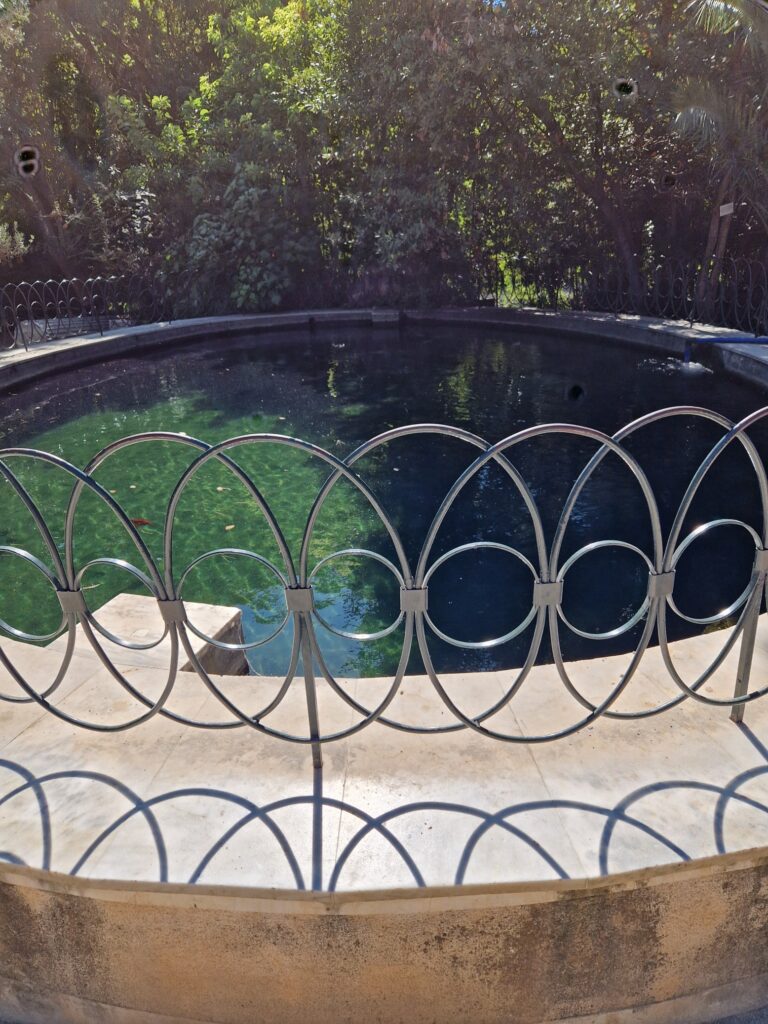
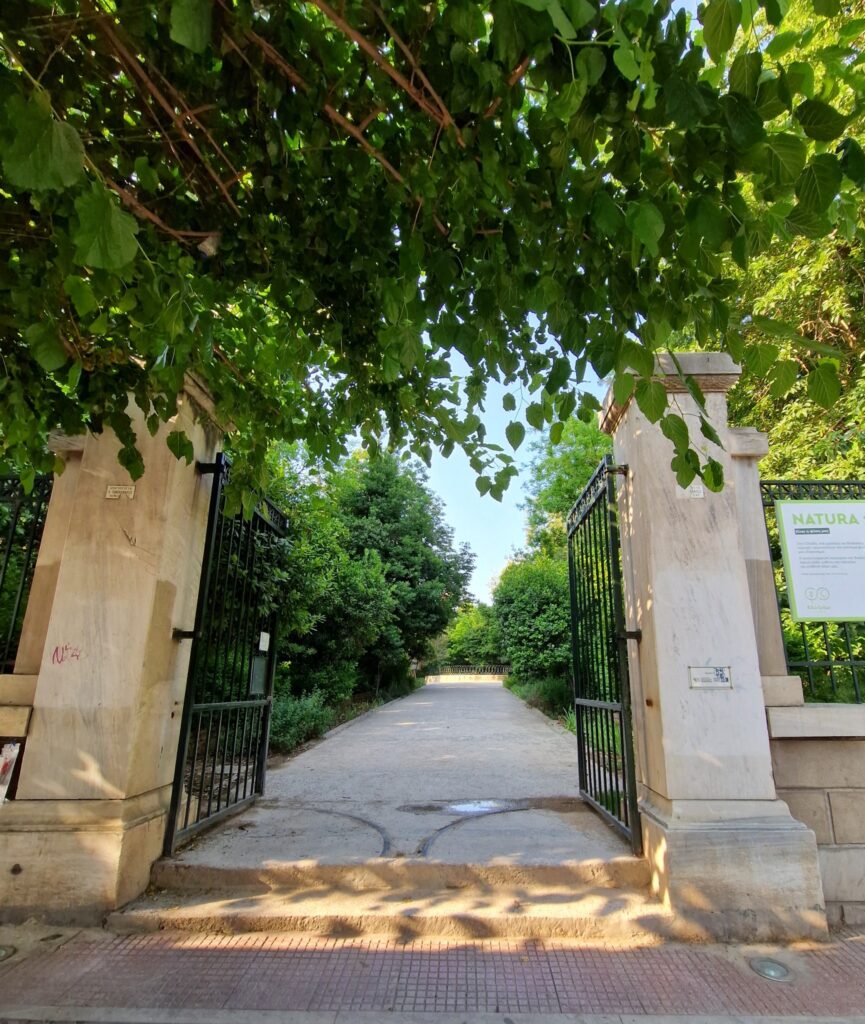
The pond also marks the garden’s highest point. From here, the water is directed into a branching system that irrigates the park’s trees and vegetation. It’s a quiet yet tangible link between ancient Athens and the modern metropolis.
Ancient remnants in the National Garden
The National Garden is truly a peaceful green space amid the city’s bustle – an oasis and a place to breathe in modern Athens. But the site also has deep historical roots. Already in antiquity, the philosopher and botanist Theophrastus had a private garden here. In the mid-19th century, a royal park was established on the same site at the initiative of Queen Amalia. At that time, it was known as the Royal Garden.
Today, known as the National Garden, it is a lush public refuge filled with winding paths, tall palm trees, and an unexpectedly rich birdlife – open to all, every day of the year.
To reach the next stop on our tour, we need to walk through the entire garden, from the northern pond to one of the southern exits. There, in a somewhat hidden corner, nestled among several other Roman remnants, lies a rather overlooked monument.
It is a massive architrave, a marble beam that for centuries adorned Hadrian’s great reservoir at Dexameni Square in Kolonaki. In the first part of our series, we explored the area around Dexameni, where this architrave once stood in its original place.
At the end of the 18th century, it was removed from its original location by the Ottoman ruler Hatzis Ali Haseki, who used parts of ancient monuments as building material for his defensive wall.

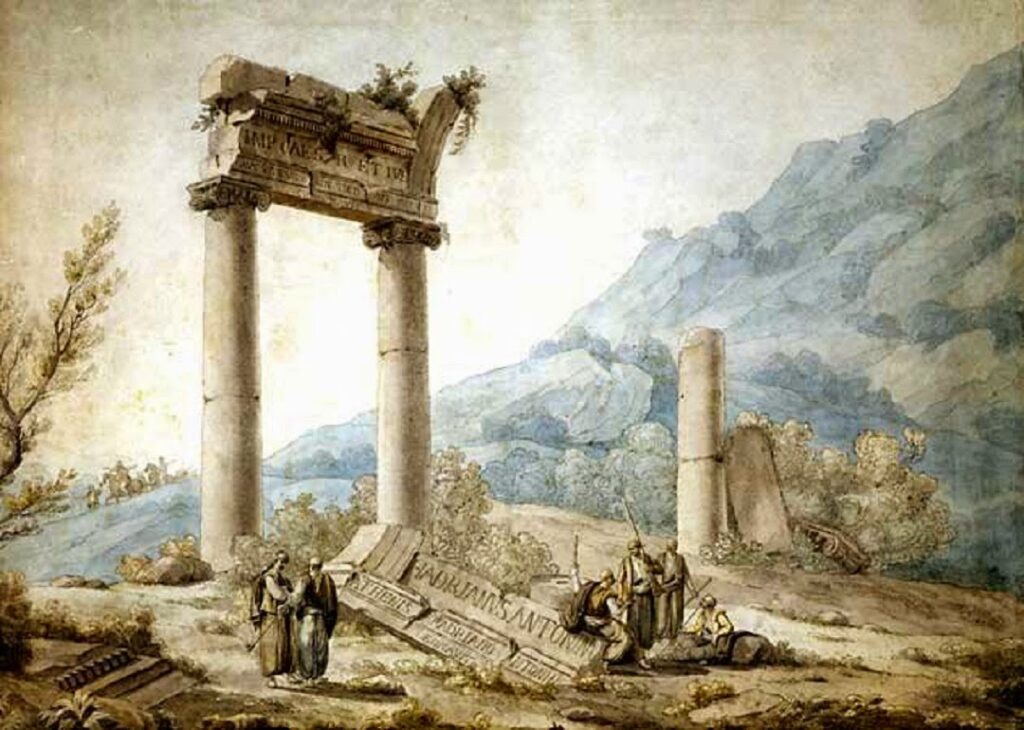
This particular marble block was then installed as a decorative top element above one of the wall’s seven city gates – the so-called Boubounistra Gate. After the Greek War of Independence, when the wall was torn down, it was eventually placed in its current location in the National Garden, without any form of signage. In the 19th century, it was common for ancient fragments to be reused as ornamental features in gardens, in a spirit of romanticism and decoration.
The marble architrave bears a Latin inscription stating that the aqueduct in Athens was begun by Emperor Hadrian and later completed and inaugurated by his adopted son, Antoninus Pius.
Hadrian’s Athens
Nearly two thousand years ago, Athens stood at the threshold of a dramatic transformation. The city was already ancient, but Emperor Hadrian sought to breathe new life into it. A devoted philhellene – a lover of Greek culture – Hadrian, though a conqueror, saw Athens as the cultural capital of the East, a place where Roman power and Hellenic heritage could converge.
During his reign, a new district rose in Athens, filled with monumental buildings, libraries, and grand residences for the city’s aristocracy. The era of Pax Romana became a golden age of architecture for the city, and no one played a greater role in reshaping it than Hadrian himself. He financed and oversaw many of the major projects – among them Hadrian’s Arch and the long-delayed completion of the great Temple of Olympian Zeus.
We’ve explored the temple and shared some of the lesser-known stories of the Olympieion in a previous article.
Now, we leave those iconic landmarks behind and make our way toward our next stop: King Otto’s arched stone bridge over the Ilisos River, today hidden beneath one of the busiest intersections in modern Athens.
The arch bridge over Ilisos
If you walk around the entire archaeological site of the Olympieion and follow the fence along its southern side, you’ll come out onto Athanasiou Diakou Street. Continuing along that road, you’ll soon reach one of the city’s busiest intersections, where several major thoroughfares converge.
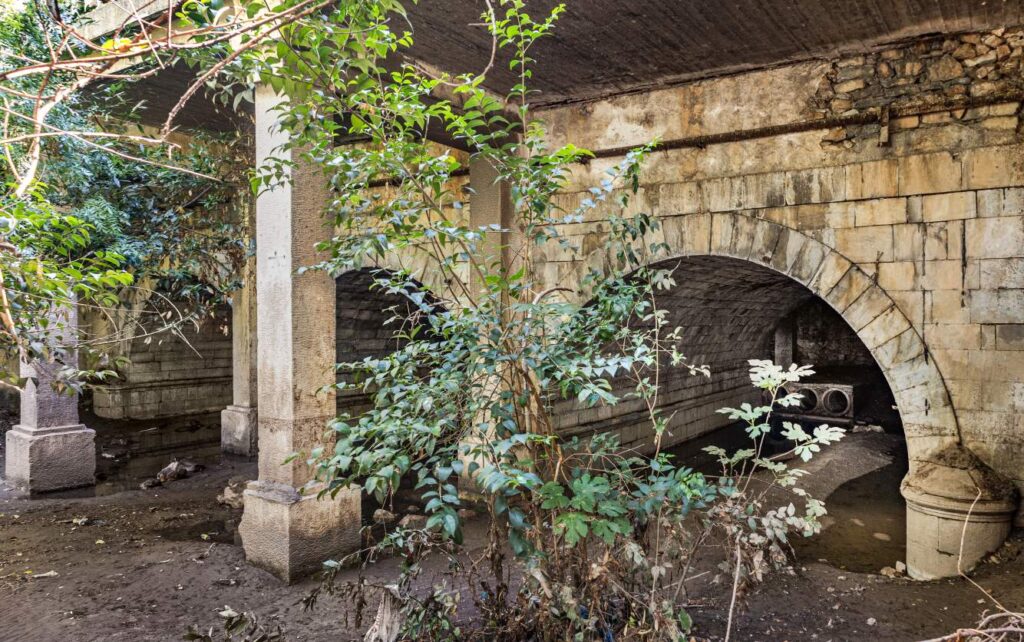
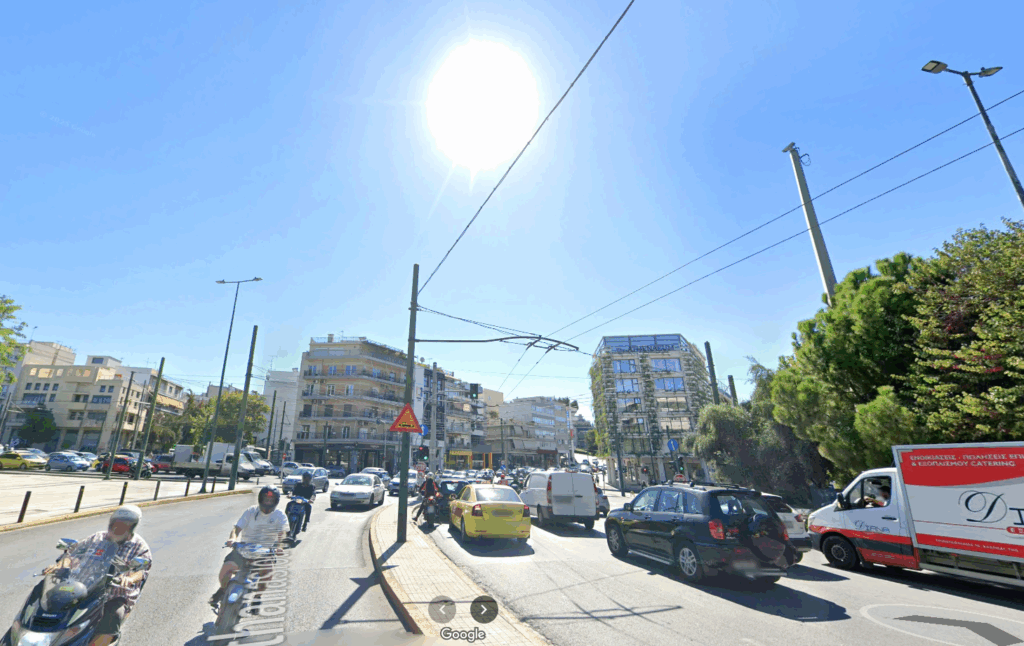
Well hidden beneath the busy traffic of this intersection lies a stone arch bridge, built in the mid-1800s on the initiative of King Otto, Greece’s first monarch. It once spanned the Ilisos River – one of Athens’ largest waterways.
Today, the river runs underground, but the remaining channel has been overtaken by nature: dense, almost impenetrable vegetation spreads like a small, tangled jungle in the heart of the city. The central section of the riverbed is still known as Vatrachonisi/Frog Island – even though it’s no longer an island in the true sense. In ancient times, Frog Island was a sacred place where many gods, demigods, and nymphs were worshipped.
Relief of the God Pan
Just past the bridge, a small paved walkway branches off to the left, leading down into the overgrown riverbed. The small Orthodox chapel located there today is dedicated to Saint Photini. In ancient times, the sacred spring of Kallirhoe flowed nearby – its waters believed to be holy. The courtyard in front of the chapel is a great place to sit for a while and escape the roar of traffic just above.
About halfway down the walkway toward Agia Foteini, a barely visible path breaks off to the right, cutting through the vegetation and heading straight toward the cliff face. A sign indicates that the hollow in the rock was once a cult site dedicated to the god Pan. Numerous artifacts have been found here to support that interpretation.
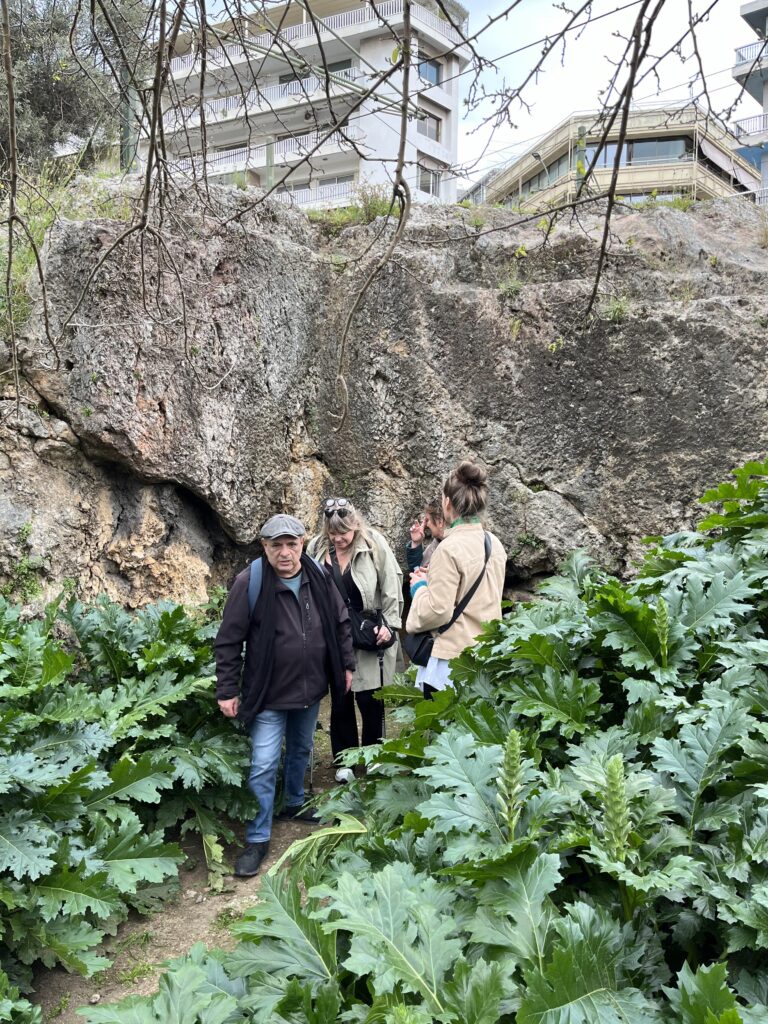
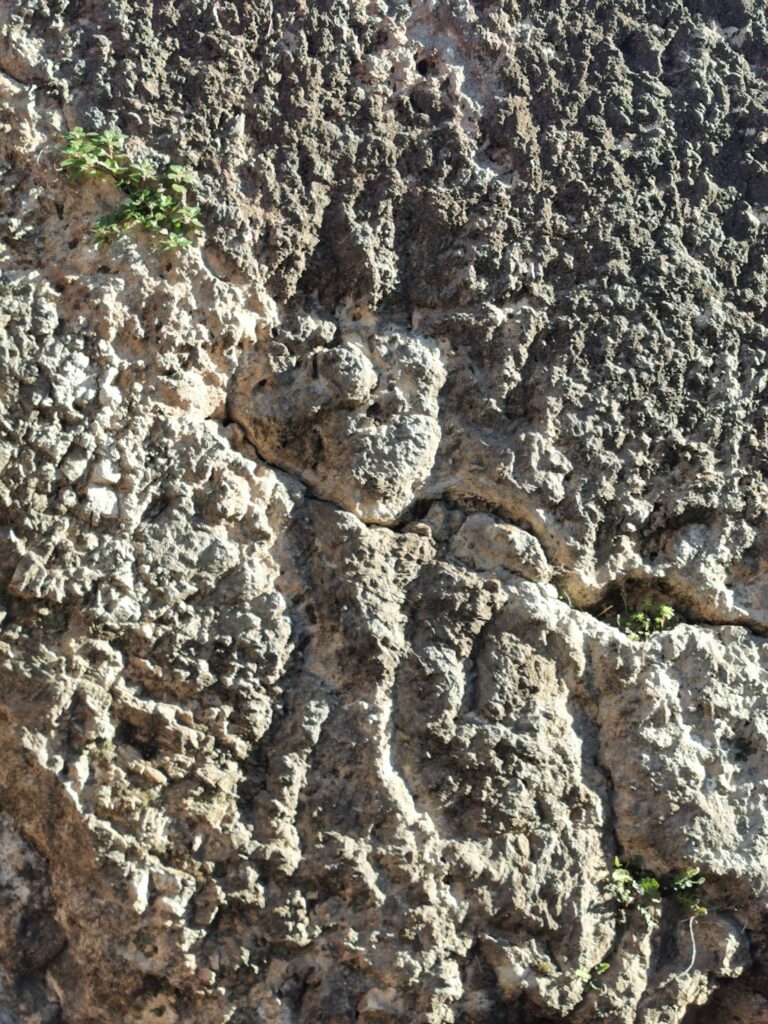
Carved into the rock face is an ancient relief of the god Pan – still visible today, though hard to spot unless you know exactly where to look. In my experience, it’s easiest to make out when the afternoon sun hits the cliff from the west, casting shadows that bring out the contours. Time and city pollution have worn heavily on the original carving, and it’s worth noting that the entire cliff was once nearly demolished to widen the road above. It was only thanks to the persistent efforts of local archaeologists that the decision was reversed at the last moment.
To reach the next stop on our route through lesser-known attractions in Athens, we’ll need to cross over to the other side of the city center. We’ll walk through Plaka and Monastiraki, then follow Athinas Street toward Omonia Square – until we reach Athens’ Central Market.
🔎 Tip: Join our guided tours in Athens – every spring and fall, we explore the city’s lesser-known landmarks together, on site. Learn more and book your spot here →
Varvakios Agora – Athens Central Market
Athens Central Market, known as Varvakios Agora, is a bustling hub of commerce in the heart of the city. It first opened in 1886 and has been operating ever since. The air here is thick with the scents of spices, fresh fish, meat, cheese, fruit, and warm bread, blending with the shouts of vendors and the chatter between loyal customers and curious passersby.
During holidays – especially Easter – the market teems with Athenians stocking up for celebratory meals, reflecting the city’s vibrant food culture. The area around the market is equally lively, with small shops and stalls selling everything from dried fruit and nuts to soaps, baskets, and kitchen tools – offering an authentic glimpse into everyday life in Athens.
St. John on the Column
Not far from the meat and fish halls, right in the heart of the market district on Evripidou Street, stands the small chapel of Agios Ioannis tis Kolonas – St. John on the Column. A single ancient Corinthian column rises straight through the roof, making this spot a truly unique feature in the cityscape.
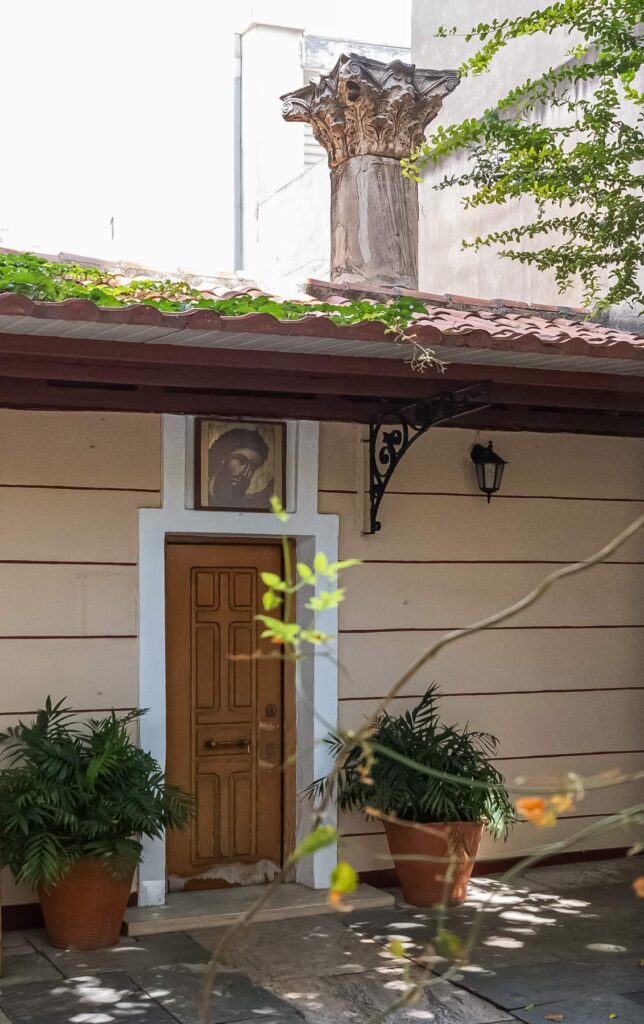
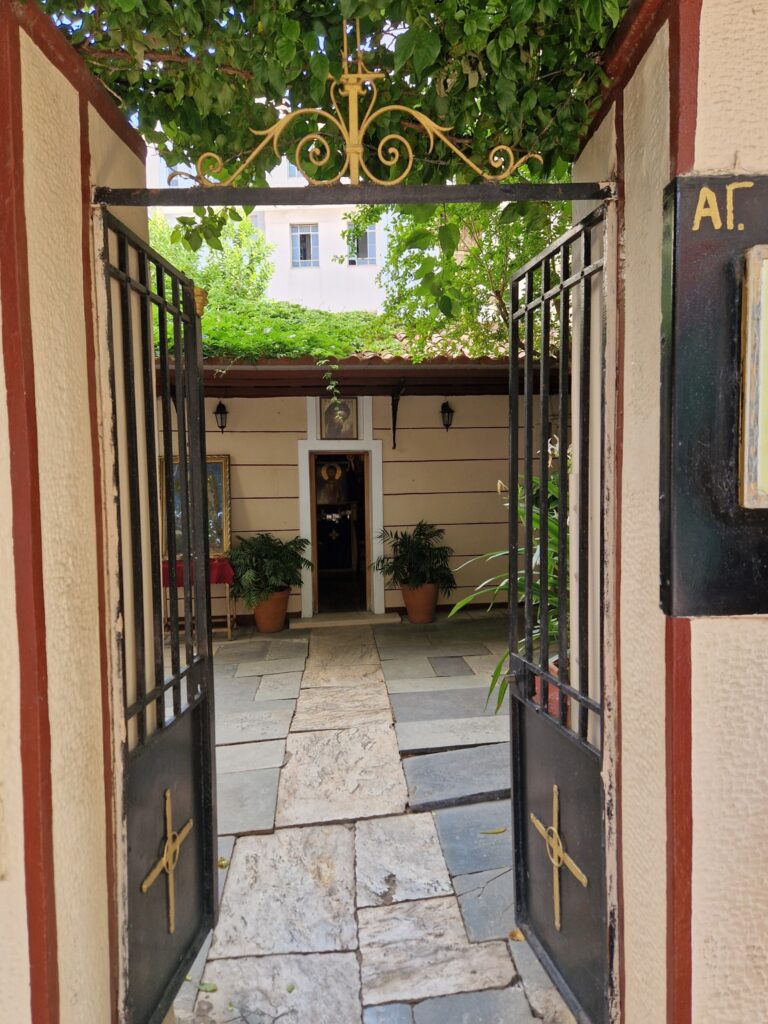
The chapel is believed to be around 1,500 years old, built on the ruins of an earlier temple dedicated to Asclepius, the god of healing. Even into modern times, visitors have tied colored threads around the column, secured with wax – a ritual performed in hope of relief from fever and illness. A hidden, sacred little chapel nestled in an area that, until the 19th century, was mostly farmland and open fields.
Beyond the city center
From King Otto’s stone bridge, the Ilisos River continues its journey underground all the way to its mouth in Faliro, near Piraeus. As shown in the video below, the Greek Expedition joined a striking and thrilling exploration beneath the Greek capital’s roads and buildings. The underground tour was organized in collaboration with the Alter Exploring Team, led by speleologist and civil engineer Panagiotis Deuteraios.
Athens behind the facades
The Ilisos River may be hidden today, but it still whispers beneath the city – quietly, unnoticed, yet never entirely silent. Like other traces we’ve followed on this tour, it remains beneath the surface – a reminder that Athens isn’t just something you see, but something you gradually uncover, layer by layer.
And perhaps it’s in the quiet in-between spaces – where history isn’t marked or signposted – that you come closest to the city itself.
